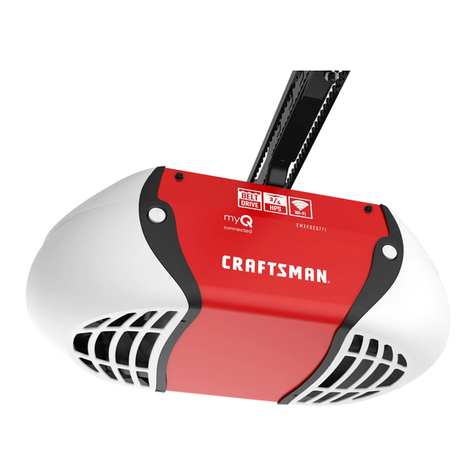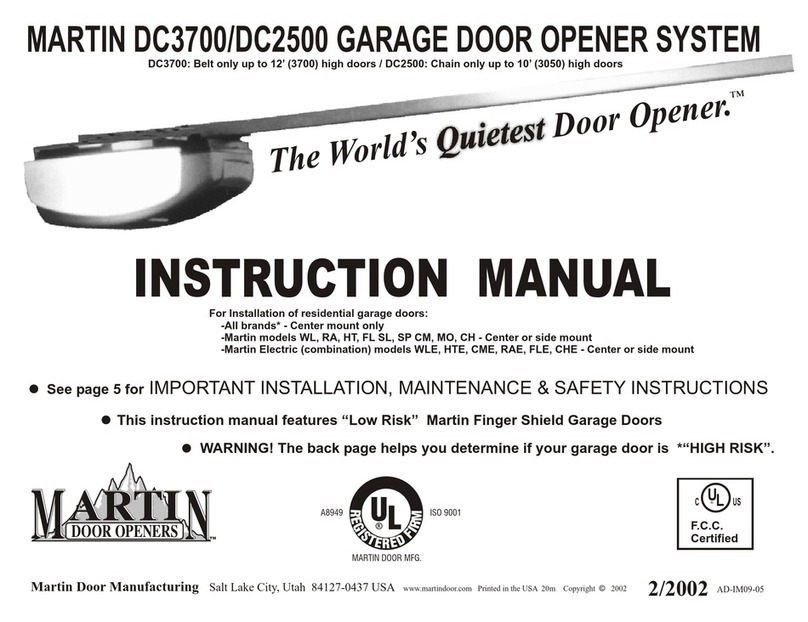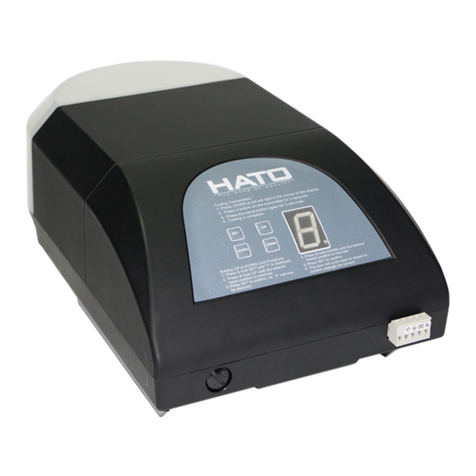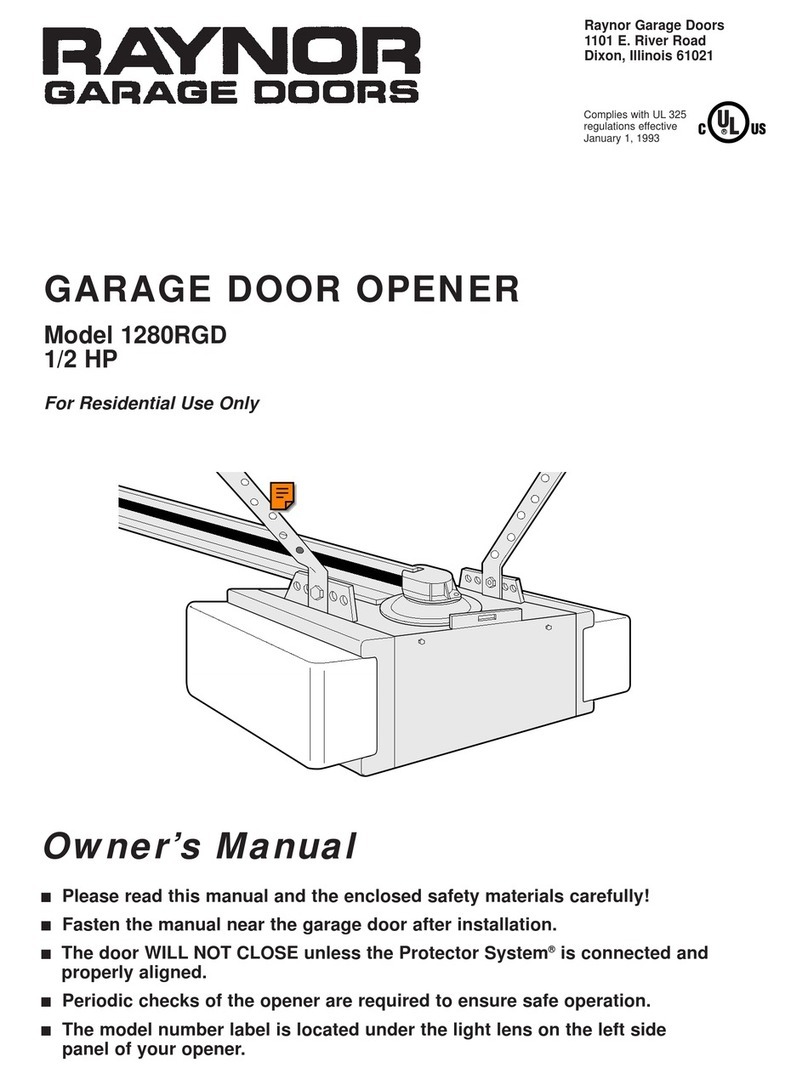THE FOLLOWING ITEMS ARE HELPFUL TO COMPLETE A SATISFACTORY MARTIN GARAGE DOOR AND OPENER INSTALLATION:
Hammer
Level (magnetic)
Hacksaw
Wire Cutters
18’ (5.5) measuring tape
Socket wrench set for 7/16“ (11), and 9/16” (14) with 3“ (76) extension
Regular and phillips screwdriver
End wrench set for 7/16“ (11), and 9/16” (14)
10/40 motor oil lubricant
Wax lubricant (paraffin, candle, etc.)
Cordless drill with 1/8“ (3), 13/64” (5), 1/4” (6) bits
plus 1/4” and 3/8” (6 and 10) masonry bits
Step ladder (not shown)
Pencil
Punched angle opener hanger: 8' X 1-1/4" X 1-1/4" (2440 X 32 X 32)
Needle nose piler and wire stripper.
NOTE: Bolts, lock nuts and lag screws for fastening the punched angle are
furnished with the door opener hardware fasteners.
1.
2.
3.
4.
5.
6.
7.
8.
9.
10.
11.
12.
13.
14.
15.
2.
3.
6.
9.
WAX LUBE
10/40
OMT O R
OIL
11.
10. 4.
1.
7.
MT
G O
GAR
RD
AS
E O
TA RI TA RI
M MN N
14.
8.
6.
5.
13.
ALL MEASUREMENTS IN
PARENTHESIS ( ) ARE
MILLIMETERS IN THIS
INSTRUCTION MANUAL.
!
IMPORTANT
INSTALLATION INSTRUCTIONS
Do not install this opener or any other opener on "HIGH RISK" garage doors that may cause severe injury, entrapment or death!
See back page for serious injuries which may occur if “HIGH RISK” areas are left uncorrected.
Martin Finger Shield Garage Doors are “Low Risk”.
Untrained or Negligent Installing, Adjusting and Servicing can be Dangerous! The
garage door springs and related parts can cause serious injury or death! IF YOU ARE
UNSURE, CALLA TRAINED MARTIN DOOR DEALER!
Garage door should be balanced and easy to open and close by hand.
Locks should be disabled and pull down ropes should be removed.
Locate wall control/push button within sight of door, at min. height of 5' (1520) so
small children cannot reach it, and away from all moving parts of door. See Step 8.
Emergency release tag should be installed above knob and adjusted to about
6' (1830) above the floor.
Risk of electrical shock is explained in Step10. Do not connect opener to source
of power until instructed to do so.
Entrapment and warning labels should be installed next to the wall control/push
button as explained in Step 14.
IMPORTANT
MAINTENANCE & SAFETY INSTRUCTIONS
Monthly, check the opener's down cycle safety reverse. The door must reverse when it
contacts a 1 1/2" (38) high object (or a 2X4 board laid flat) on the floor, in line with the door
opener. A closing door must also reverse if the photo eyes are interrupted. See Steps 12,13.
Always keep the moving door in sight and away from people and objects until it is
completely closed. NO ONE SHOULD CROSS THE PATH OF THE MOVING DOOR.
NEVER GO UNDER A STOPPED, PARTIALLY OPEN DOOR
Do not allow children to operate or play with the garage door opener controls. Keep all
remote controls away from children.
The emergency release should only be used when garage door is in the closed position.
Weak or broken springs may cause door to fall if released in the open position, increasing
the risk of severe injury or death. Use caution when using the release with door open.
Monthly visually check the lift cables, spring assembly, hardware, etc. for wear and stability.
If the Safety Reverse or any other part of the garage door and opener system do not work
properly, or if you do not understand, call a trained Martin Door Dealer.
TO REDUCE THE RISK OF SEVERE INJURY OR
DEATH, READ AND FOLLOW ALL INSTRUCTIONS
TO REDUCE THE RISK OF SEVERE INJURY OR
DEATH, READ AND FOLLOW ALL INSTRUCTIONS
SAVE THESE IMPORTANT INSTRUCTIONSSAVE THESE IMPORTANT INSTRUCTIONS
COPYRIGHT © 2003 MARTIN DOOR 5
15.




























